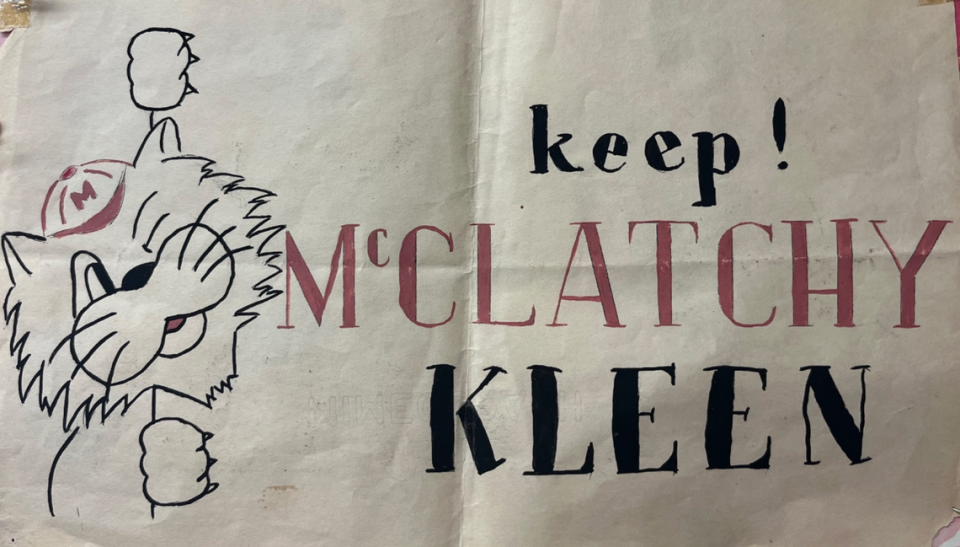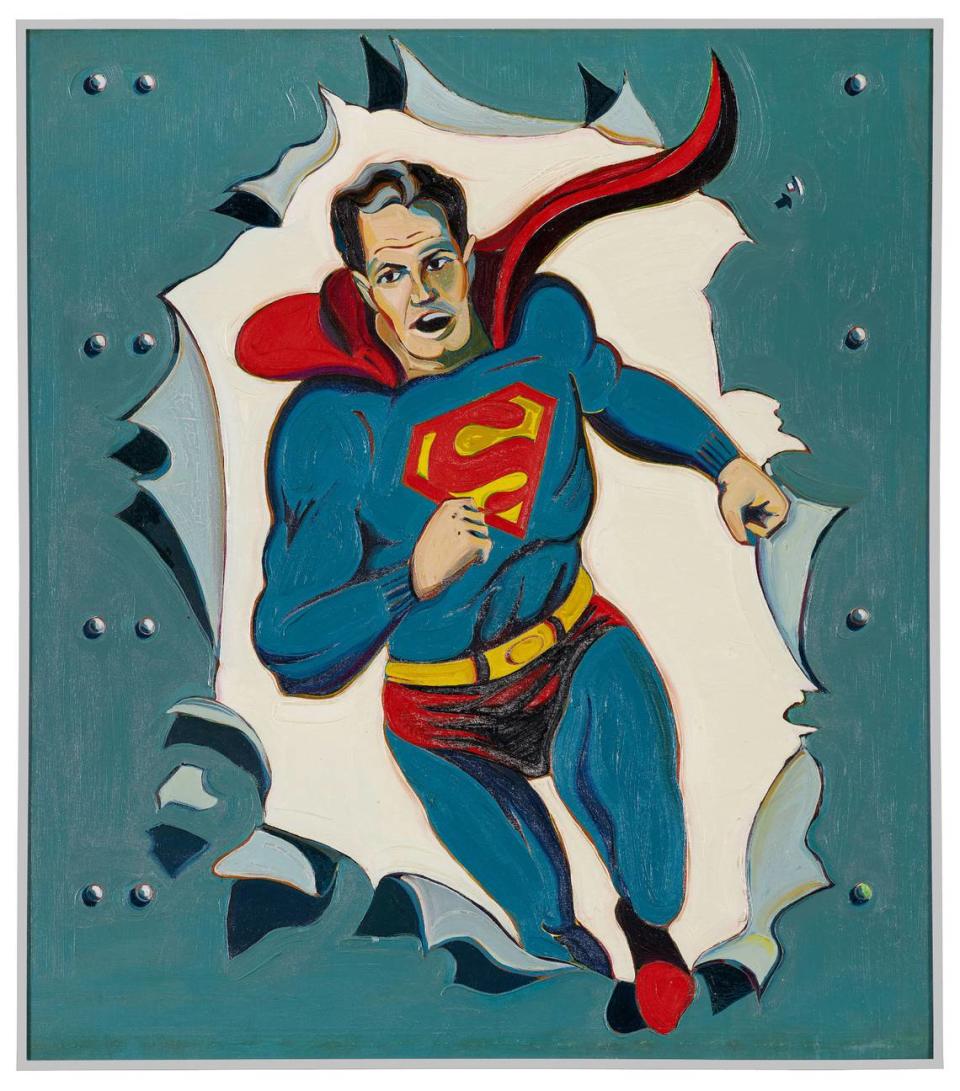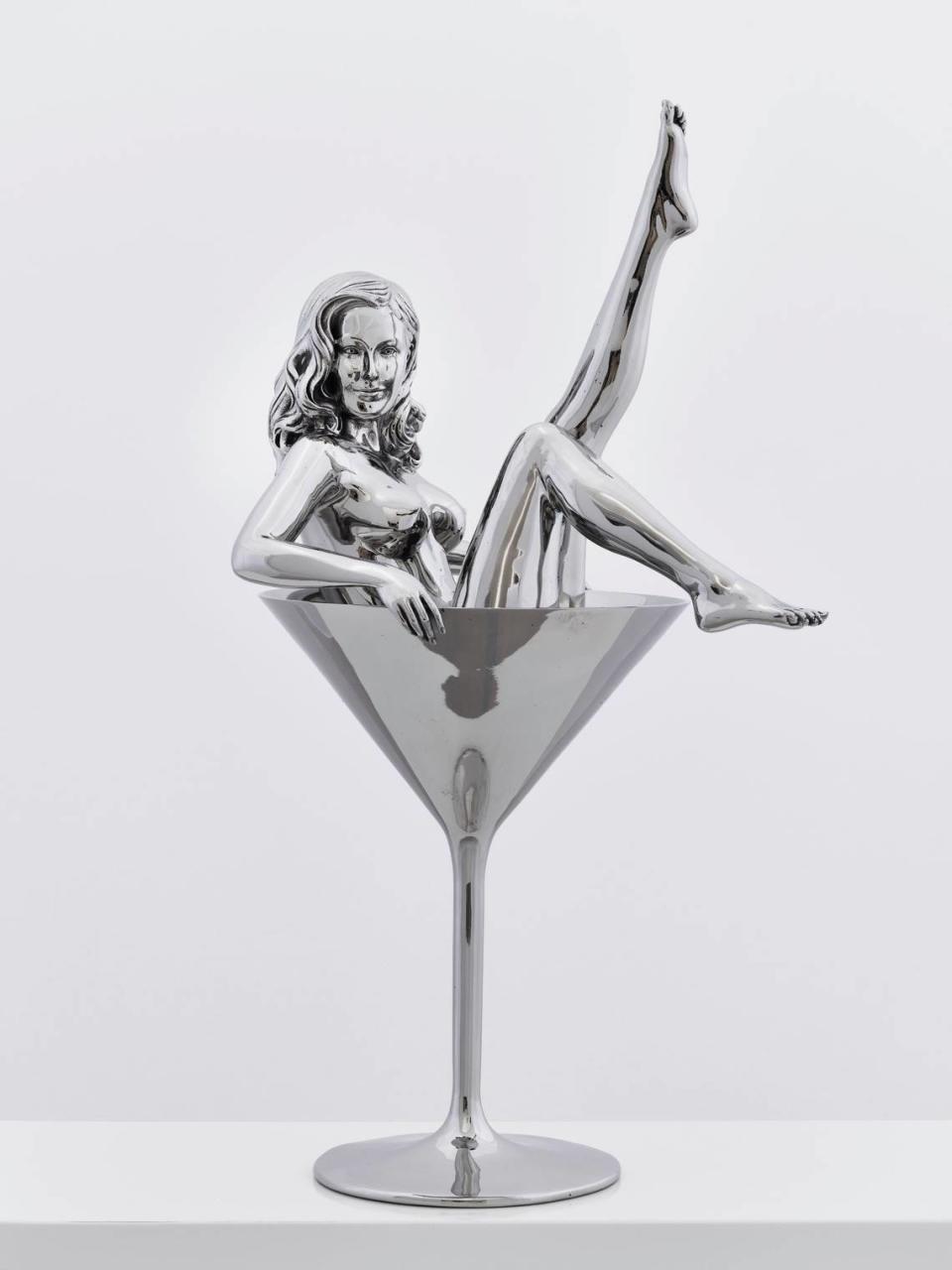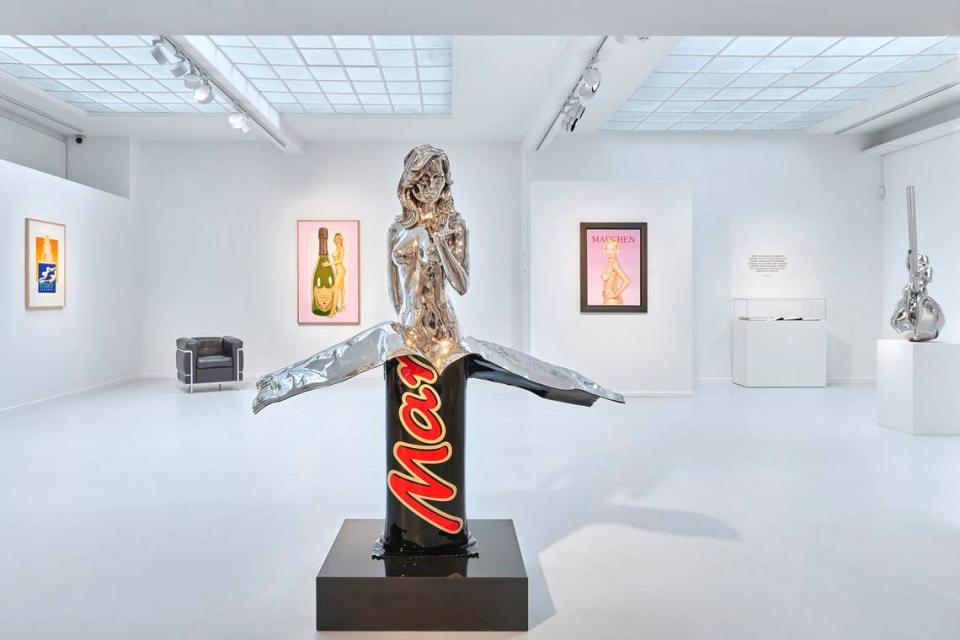Sacramento-born artist Mel Ramos died in 2018, but his work still has international appeal
- Oops!Something went wrong.Please try again later.
- Oops!Something went wrong.Please try again later.
- Oops!Something went wrong.Please try again later.
When pop artist Mel Ramos died in 2018, he left his family with a trove of priceless works of art given to him by contemporaries like Andy Warhol, Roy Lichtenstein and Wayne Thiebaud.
Warhol and Lichtenstein are among the most well-known pop artists, with works like Warhol’s “Campbell Soup Cans” series recognizable to even casual art fans. Thiebaud resisted calling himself a pop artist but also helped elevate the movement in the mid-1950s. More than this, he was a mentor, longtime friend, and for a time, fellow Sacramentan to Ramos, eventually a star himself.
But it wasn’t just pop art memorabilia Ramos left behind.
At Ramos’s former home in Oakland that his daughter Rochelle Leininger and her brother took ownership of, there are still what might be his earliest artistic works — posters he created while attending McClatchy High School. Ramos, born in Sacramento in 1935, used to be excused from PE to make signs advertising upcoming games for the school’s sports teams.
“He was really, really good at lettering,” Leininger said. “And I don’t quite know where that came from, other than I just think he was self-taught.”

Ramos is currently the subject of a show that opened March 30 at Galerie Gmurzynska Zürich in Switzerland entitled, “The suspense is terrible, I hope it will last: Mel Ramos, the Gmurzynska selection.” The show, which includes more than 30 Ramos pieces and is a career-spanning exhibition, runs through May 31.
It’s part of a wave of international interest for artists with local ties like Ramos, who lived the first part of his life in Sacramento before moving to Oakland in 1968.
Getting his start
Mel Ramos grew up in Southside Park and on 2nd Ave in Sacramento. His father, Clifton Ramos, identified as a census taker and World War II veteran in the 1950 U.S. Census; his mother, Agnes Ramos, is listed as a grocery clerk.
He met his wife of more than 60 years, the former Leta Helmers, while at McClatchy High School, where he played football and baseball. Celebrated writer Joan Didion was one year ahead of Ramos. Supreme Court Justice Emeritus Anthony Kennedy was a year behind.
Ramos met Thiebaud when he studied under him in the mid-1950s at what is now Sacramento City College. Leininger said Thiebaud — who died in late 2021 at 101 and is perhaps the most famous artist to have lived in Sacramento — clearly influenced Ramos.
“If you look at some of his works, especially the early ones, the color scheme, the thickness of the paint, the application of it, it’s super-indicative of Wayne,” Leininger said.
Another trait Ramos could have picked up from Thiebaud: Maintaining a staunch work ethic, which lasted well into his senior years. Bult said Thiebaud always said “that Mel was the hardest-working artist that he knew — I would think probably other than himself, because Wayne was very, very prolific and hardworking.”
In time, Ramos and Thiebaud became great friends, traveling together with their wives Leta Ramos and Betty Jean Thiebaud respectively to destinations like Mazatlan, Mexico in 1959.
Thiebaud’s stepson Matt Bult, now 67, was even at Ramos’ house at 4608 Wyman Drive in Sacramento when Kennedy’s assassin Lee Harvey Oswald was shot and killed live on-air. “We were all just sitting in the kitchen, I think around a little black-and-white TV,” Bult said.
Making his mark
Over time, Ramos carved out his own niche in the art world, with him eventually known for his works on superheroes, nude women and the Chiquita banana. The current show at Galerie Gmurzynska Zürich includes a 2007 sculpture of a topless woman emerging from a banana as well as a 1962 painting “Man of Steel” that depicts Superman.
“I’m a big fan of his work and I think he’s as relevant now as he was back then,” said Lucas Bscher, a curator and partner at the gallery.

Ramos’ depiction of nudes could make his work polarizing, with the New York Times noting in 2018 that critics debated if his work was “clever Pop art or something akin to smut.” Bscher said, though, that focusing too much on the nudity can obscure the point Ramos was making.
“I mean it was always like the work was sort of a parody of the advertisement industry in its heyday,” Bscher said.
There was a light-hearted side of Ramos’ artistry that could be common to the Sacramento area. Scott Shields, the Ted and Melza Barr chief curator and associate director at the Crocker Art Museum in Sacramento, worked with Ramos on a 2012 show at the museum, “Mel Ramos: 50 Years of Superheroes, Nudes, and Other Pop Delights.”
“There’s something about the art in our region that oftentimes there’s an element of humor that runs both through the artist and through the artwork,” Shields said. “And he was certainly part of that.”

Ramos had a smaller show in 2016 at Galerie Gmurzynska Zug. Longtime actor George Hamilton, who collects art, was there at the gallery’s invitation and participated in a public Q&A session with Ramos. The two stayed in contact thereafter, with Hamilton saying he’d still like to buy some of Ramos’ work and that he thinks him comparable to Warhol or Lichtenstein.
“He had such a wonderful eye,” Hamilton said. “And his ability to satirize was sort of what I was trying to do in my life with the characters that I had played.”
Beyond Sacramento
Mel and Leta Ramos had three children: son Bradley in 1959, son Skot in 1960 and their youngest, Leininger, in 1964. The family moved to Oakland in 1968, two years after Mel began teaching at what is now California State University, East Bay.
The Ramoses bought a house in the Rockridge neighborhood that they kept until their deaths. They filled it with works from artists like Warhol, who gifted them a painting from his “Electric Chair” series that hung in their living room during Leininger’s childhood.
“You sort of have to explain to your 8-year-old friends what an electric chair is,” Leininger said.
The family still has some of the works from famous artists, often personalized to Ramos. They still have some of Ramos’ portfolio as well, though some of it has gone elsewhere. The Thiebaud family donated one of Ramos’ signature pieces, “The Atom” from 1962, to the Crocker. The museum has it and another of his works, “The Princess” from 1965, on display.
Another Ramos painting, “A Sinister Figure Lurks in the Shadows” from 1962 sold at auction in 2015 for $173,000, according to the Associated Press. Leininger said her father, an avid comic book collector, had traded the painting in the early ‘60s for some comic books. He didn’t regret it, she added.

While Ramos found success as a professional artist, his life was also grounded in teaching and helping others.
Ramos taught for more than 30 years at California State University, East Bay, with his academic career including teaching stints at California State University, Sacramento and Arizona State and artist-in-residence positions at Syracuse and University of Wisconsin-Madison. Bradley, who died in 2010, was born with Down syndrome, so the Ramoses were also longtime supporters of an Oakland nonprofit center for disabled artists, Creative Growth.
Thiebaud and Ramos shared another similarity: Late in life, each was devoted to women who experienced memory issues.
Thiebaud lived about half his life in a two-story house in Land Park. After Betty Jean developed Alzheimer’s disease, she moved to a safer one-story home in South Land Park. Wayne would come visit and read to his wife, who died in 2015 at 86. A portrait of the two painted by Leta hung in Betty Jean’s living room, according to Bult.
The Ramoses remained in the same home after she developed dementia in her early 60s. Leininger eventually moved in to help with care for her mom, who died at 85 in 2020, while her dad continued to paint in his home studio. The three would have lunch together each day.
“Very few people that I know actually wake up every morning and love going to do what they call work,” Leininger said. “I don’t think my father thought of it as his work. He couldn’t get to his canvasses soon enough.”
Ramos’ legacy
Leininger, who lives in Danville, has continued her parents’ work as founder and CEO of the Mel and Leta Ramos Family Foundation. She worked with the Crocker to launch a virtual education center last November that provides art curriculum to classrooms. She sees her father’s support of education as a major part of his legacy.
That said, interest in work by artists like Ramos and Thiebaud has remained and could even be growing. When Leininger spoke to The Bee in late March, she said she’d just returned from a show in Paris that included 21 of her father’s works and that she would soon be heading to Zürich.
Meanwhile, Thiebaud has a show at Fondation Beyeler in Basel, Switzerland that runs through May 21. Bult said he also had a show lined up in London and had drawn interest from galleries or auction houses in Seoul, Hong Kong, and New York. He said there’s a big market currently for California art.
Shields isn’t surprised to see the burgeoning international interest in artists like Ramos and Thiebaud, saying, “A lot of the world’s still kind of waking up to them.”

